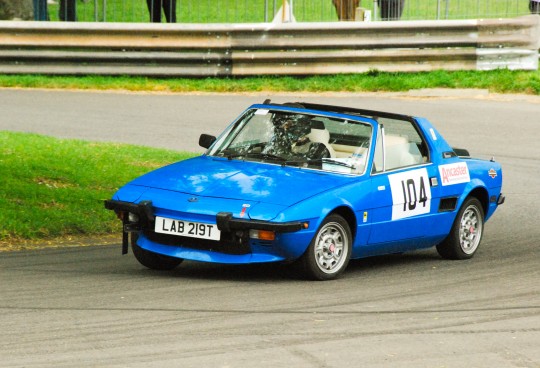I’ve done my fair share of grumbling here about the issues a typical Leyland customer might have experienced after taking delivery of their shiny new automobile, but I’m trying to turn over a new leaf. This week I’ve been inspired by a genuinely moving testament to the longevity and high production standards of the beloved conglomerate, and when I say moving testament, I mean seeing a Leyland product that was actually moving, under its own steam and everything – no, not a cloud of steam….
The Rover P6 was a fantastic car, the first ever European Car of the Year as a matter of fact, and a roaring success for the marque. Chock full of innovative touches, brave styling, powerful engine options and a comfortable/ergonomically sound interior, the P6 was, unusually for a Rover, well ahead of its time. Also unusual was that the car had been developed from a blank sheet of paper, meaning that it shared no components with any other vehicle in the range, and as such could incorporate different approaches to virtually every mechanical aspect.
The greatest modernisation by far was the unibody design, inspired by the legendary Citroën DS (with which it would compete in the marketplace), essentially comprising a base frame onto which chassis, electrics, body panels etc were mounted, simultaneously providing greater structural rigidity and ease of servicing. The front bulkhead (between the engine bay and dashboard) gave substantial passenger protection in addition to providing a mounting point for the unique suspension system, a system rather too complex to fully detail here (phew) but which featured independent horizontally mounted coil springs, whilst rearward springing was provided by de Dion tube, also developed specifically for the P6. With a resultant reduction in unsprung weight, ride quality and roadholding were exemplary, whilst the servo-assisted Dunlop disc brakes provided more stopping power than the car needed with 1978 cc under the hood. Complete the package with a fully synchro’ed four-speed ‘box and the package was a tasty one, but about to get better, as in 1968 Rover (now under the Leyland banner) took delivery of Buick’s troubled 3528 cc aluminium V8, ironed out the troubles that had led GM to abandon it, and turned the P6 into an altogether more potent proposition.
Happily then, it was one of the safest cars on the road, with features including seatbelts fitted as standard, an impact-absorbing dashboard, break-away interior trim, front and rear crumple-zones and wear sensors on the brake pads (on later models). Not only this, but in case of a frontal impact, both the suspension geometry and engine mountings were designed in order to prevent the mechanicals from entering the cabin.
With such an abundance of qualities then, it’s sad to reflect that the car suffered the same fate as many of its contemporaries, rendered overly complex and unreliable thanks to the use of lower quality materials and the efforts of a disgruntled workforce. Those that remain on the roads today are, in my experience, a pleasingly mixed bag – in just the past few months I’ve seen about six, ranging from spotless examples to rust-ravaged or battered ones, all in apparently daily use. The P6 is a classic, no doubt, but more than that, it’s a truly practical one.
First published on discoveryuk.com

